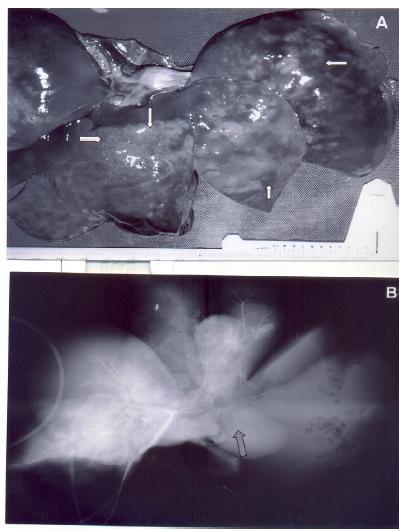Abstract
Purpose:
To evaluate the morphological effects of injected sclerosing agents into the liver.
Methods:
This study was performed on twenty dogs, distributed into five groups: Group 1 (n = 5) - control, Group 2 (n = 5) - injection of 50% glucose solution inside hepatic parenchyma and animals followed during seven days, Group 3 (n = 10) - injection of ethanol inside hepatic parenchyma and animals distribution into two subgroups Subgroup 3A (n = 5) - followed during 24 hours and subgroup 3B (n = 5) - followed during seven days (group 3B), Group 4 (n = 5) - ethanol injection inside left portal vein branch and followed during 24 hours. Livers were macroscopically evaluated, submitted to hepatic arteriography and portography, then histology.
Results:
All animals in Group 4 died within 23 hours due to diffuse hepatic necrosis. The animals of groups 2 and 3 had a satisfactory evolution. Fibrosis formed in the segment reached by the sclerosant solution and interruption of the contrast flow injected into the portal system.
Conclusion:
Intrahepatic parenchymal ethanol injection is well tolerated and causes sclerosis restricted to a specific segment; however, intraportal ethanol injection causes massive hepatic necrosis and can lead to death.
Key words:
Liver; Necrosis; Glucose; Hepatectomy; Sclerosis; Dogs

